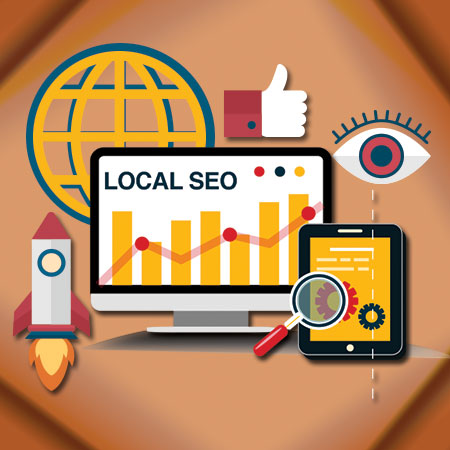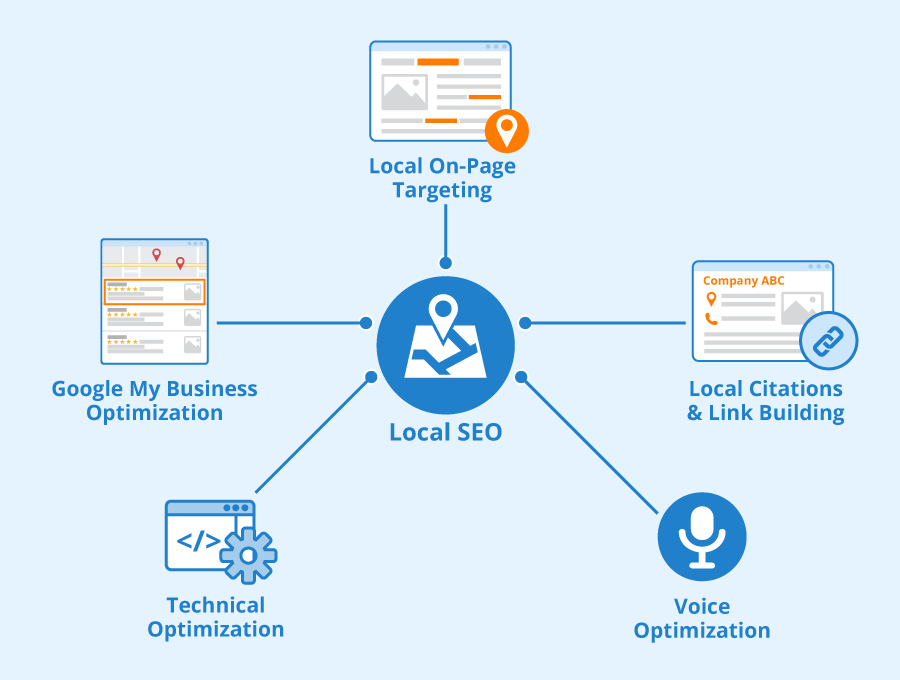Elevate your brand with a all-in-one digital marketing agency
How Reliable Internet Style Can Enhance Your Search Engine Optimization Approach and Improve Customer Experience
The junction of efficient internet design and search engine optimization is a crucial area for any company seeking to improve its online existence. An user-friendly design not only raises customer experience however also considerably affects SEO efficiency by reducing bounce prices and enhancing engagement metrics.
Value of Website Design for SEO
Efficient web style is frequently underestimated in its influence on search engine optimization (SEARCH ENGINE OPTIMIZATION) These variables add to lower bounce rates and greater user engagement, which are important metrics for Search engine optimization success. seo agency.
In addition, internet design components such as tidy code, enhanced pictures, and appropriate use HTML tags significantly affect a website's crawlability. Look engines count on structured information to understand internet site web content and context, making it important for web developers to apply ideal methods. Furthermore, the combination of SEO methods within the design stage, such as consisting of keyword phrases in titles, meta descriptions, and alt message for pictures, can boost exposure in search outcomes.
Inevitably, prioritizing effective website design not just guarantees a smooth user experience yet also develops a strong foundation for search engine optimization efforts, leading to enhanced natural website traffic and enhanced positions. Hence, businesses have to identify the inherent link in between website design and search engine optimization to achieve on-line success.
Key Style Elements for User Experience
Customer experience (UX) works as a cornerstone for effective internet layout, affecting exactly how site visitors communicate with a site and perceive its value. To maximize UX, numerous vital style components should be focused on.
First of all, intuitive navigation is vital; a well-structured menu and clear paths allow users to find details quickly, decreasing aggravation. Aesthetic hierarchy plays an important role, assisting individuals' interest to essential elements through shade, dimension, and placement. This promotes quicker decision-making and improves general engagement.
Additionally, a regular style style enhances familiarity and trust, as customers feel extra comfy navigating a site that aesthetically lines up throughout its web pages. Efficient use of white area likewise can not be ignored; it protects against clutter, allowing important content to attract attention and making the website more absorbable.
Furthermore, premium pictures and graphics are vital, as they not only catch focus however also share expertise. Lastly, fast tons times are non-negotiable; delays can lead to greater bounce rates and decreased user satisfaction. By concentrating on these essential design elements, services can significantly boost their user experience, cultivating positive communications that motivate return gos to and conversions.
Mobile Responsiveness and Search Engine Optimization Impact
As web style significantly focuses on user experience, the value of mobile responsiveness can not be overstated. With a considerable portion of web website traffic originating from smart phones, a receptive design ensures that sites are easily accessible and practical throughout various screen dimensions. This adaptability not just enhances user fulfillment however also plays a critical duty in seo (SEO)

Incorporating mobile responsiveness right into internet style additionally cultivates enhanced loading times, which is a key consider both customer experience and search engine optimization positions. Slow-loading pages deter users, resulting in higher desertion prices and adversely impacting search presence. Ultimately, prioritizing mobile responsiveness not just improves customer interaction yet additionally enhances a site's SEO technique, developing a much more affordable online existence.
Site Framework and Navigating Finest Practices
A well-organized site structure and user-friendly navigation are necessary parts of effective website design. They not just improve customer experience but also play a crucial duty in seo (SEO) A clear hierarchy allows individuals and search engines to comprehend the partnerships between different pages, boosting the total usability of the site.
To achieve ideal website framework, implement a rational pecking order that classifies web content into main topics and see here now subtopics. Usage detailed and keyword-rich URLs, as they supply context and enhance search presence. Additionally, ensure that essential pages are quickly available within 3 clicks from the homepage. This reduces bounce rates and keeps users engaged.

Determining the Success of Website Design
Determining the success of website design involves examining blog here numerous metrics that mirror individual engagement and overall site performance. Secret efficiency indications (KPIs) such as bounce rate, average session duration, and pages per session provide insight into exactly how individuals engage with the website. A high bounce price might show that users are not finding the material interesting or pertinent, prompting a need for design or content revisions.
Additionally, conversion rates are important for examining the performance of web design. An increase in conversions, whether through form submissions, item acquisitions, or e-newsletter sign-ups, usually associates with user-friendly style and user-centered performances. Devices like Google Analytics can supply in-depth reports on these metrics, enabling designers to recognize fads and locations for enhancement.
Eventually, a mix of quantitative information and qualitative feedback develops an extensive image of web layout success, guaranteeing that it straightens with both SEO purposes and individual assumptions. By consistently determining these variables, companies can improve their web style approaches to optimize individual experience and drive purposeful engagement.
Final Thought

As internet design progressively focuses on user experience, the relevance of mobile responsiveness can not be overstated.Including mobile responsiveness into web style additionally fosters improved packing times, which is a crucial variable in both customer experience and SEO rankings. Eventually, a combination of measurable information and qualitative comments develops a thorough image of internet layout success, ensuring that it aligns with both SEO objectives and individual assumptions. By continually gauging these variables, businesses can refine their internet layout approaches to maximize individual experience and drive significant interaction.
In final thought, effective internet layout dramatically boosts Search engine optimization methods and individual experience.